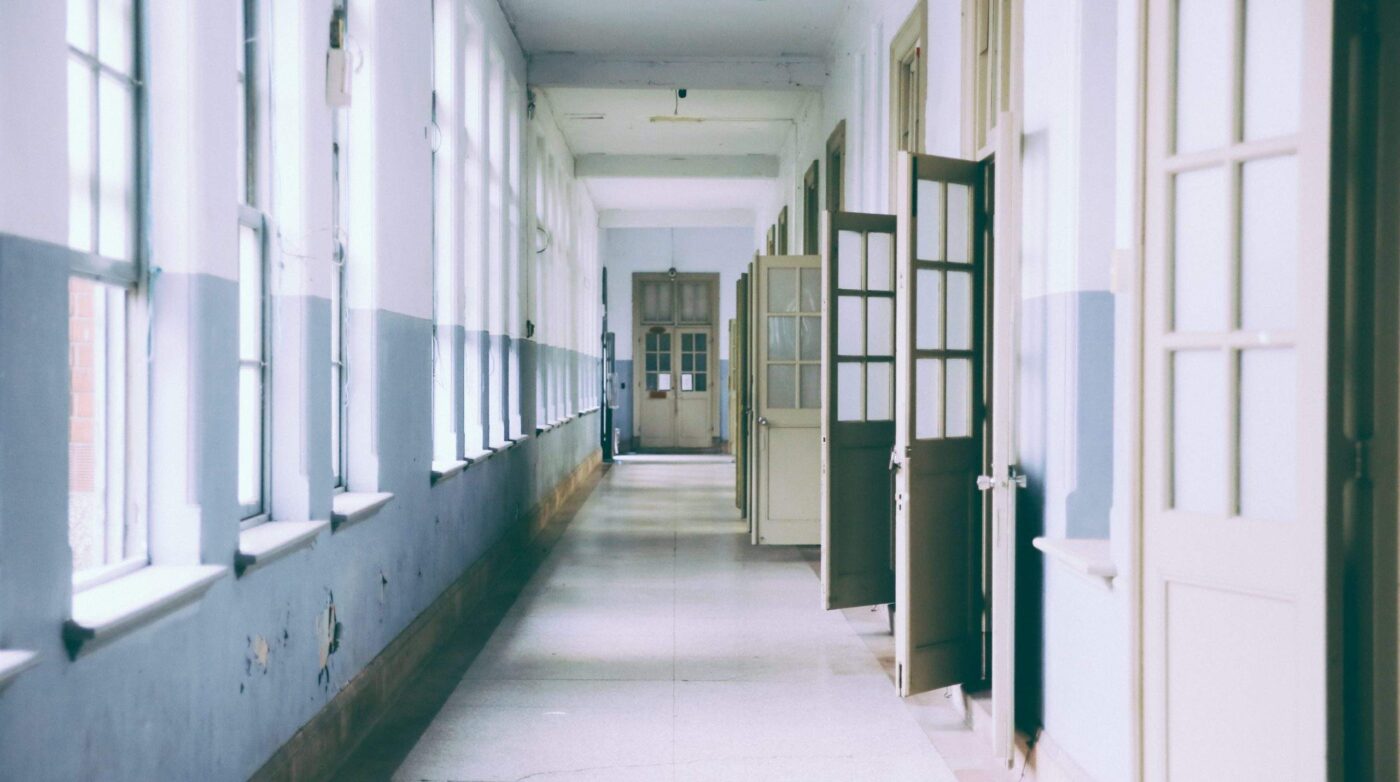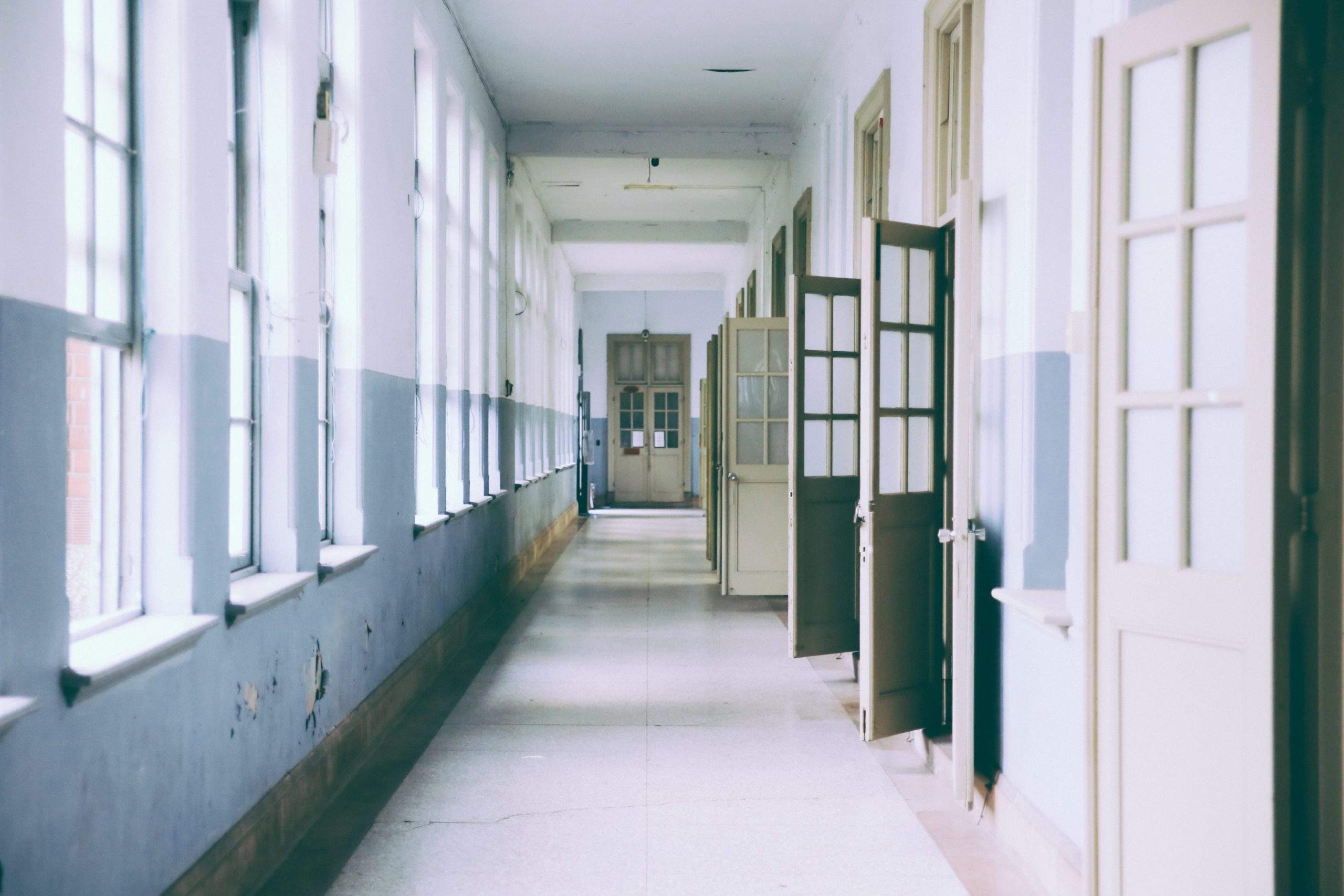
By Joey Phoenix
It’s the question of the year in a year full of endless questions: Do we send students back to school in person? The answer is undeniably complicated, and there’s little precedent for how to effectively deal with this crisis in the midst of an ongoing global pandemic.
Many schools are looking to adopt a hybrid model where students will be onsite part of the week and learning remotely the rest of the week, but there is a lot of uncertainty about what that will ultimately look like.
Like the Baker Administration’s four phase reopening plan for state businesses, the Massachusetts Teachers Association (MTA), American Federation of Teachers Massachusetts (AFT), and the Boston Teachers Union (BTU) have proposed their own four phase plan to the Department of Elementary and Secondary Education (DESE), stating “In the same way that the state is taking a deliberate and careful approach to reopening the economy, the state must take an equally deliberate and careful approach to reopening our public schools.”
So far, DESE has responded by allowing public schools to reopen 2 weeks late. But they are also requiring each of the commonwealth’s 289 school systems to submit a plan for the fall by Aug. 10 outlining their designs for a full return to the classroom, a hybrid model, and a remote learning model. However, they’re not yet requiring the schools to announce which course they intend to follow.
Medford was one of the first systems to submit their plan, but many others will be following with their submissions this week.
Salem Public Schools will be having an important discussion about their plans for reopening in the fall this week in advance of the school committee vote on August 10th. The meetings will be hosted on Zoom.
“We’re making plans for all three [scenarios], with the caveat that depending on the data and the science and what’s happening in our community, that it can turn on a dime and we all go back to remote really quickly,” said Liz Polay-Wettengel, Chief of Public Relations for Salem Public Schools, “So we’re preparing the scenarios for how we’re going to return to school. Knowing that It is possible that if there is a resurgence in cases, then that could change.”
The Differences in Flexibility between Public and Private Schools
Private schools and universities have more room to shift between scenarios in these circumstances, because they often have the funding and support needed to provide sufficient outdoor space, small class sizes, and socially-distanced learning opportunities. They also tend to have the infrastructure to quickly pivot back to a fully remote model if COVID-19 outbreaks take place.
Public schools aren’t as flexible, and many teachers and staff members are relying on their unions to propose and defend reopening plans that have the safety of both their teachers and students in mind.
Unfortunately, unless students’ families can afford to send their kids to Private School or are eligible for a scholarship or financial aid from those schools, that option just isn’t available. And so when reopening occurs in the fall, many students will be at the mercy of whatever their school district decides, for better or worse.
Advocates of kids returning to school cite developmental needs of student bodies, asking how far will remote learning set kids back if schools don’t reopen this fall. They also draw attention to the burden of childcare on working parents and guardians, especially in regards to resources for their most vulnerable and special needs students.
Defenders of hybrid-at-minimum, phased in, or fully remote models are concerned with the societal costs of healthcare, asking how much risk will parents, teachers, and students have to endure at the hands of classrooms where it’s hard to social distance or where students don’t yet have the language to understand social distancing.
Private Schools: “Can We Make it Work?”
North Shore private schools have been considering what would be necessary to reopen in the Fall since COVID-19 restrictions first took place in March of this year. And for many of them, when the question was asked “Can we make it work?” The answer was “yes, if it’s done right.”
Both The Phoenix School in Salem and the Waldorf School at Moraine Farm have been able to propose reopening strategies that prioritize both health and safety and the quality of education of students who attend their schools.
Both schools intend to fully reopen in the fall, with some adjustments.
Individualized Education Allows for Specialty Learning with the Phoenix School
The Phoenix School is a TK-8th grade micro-urban center of learning located in the heart of Salem. Recently, the school announced its plans to fully reopen in the fall in a new location, 28 Goodhue, citing the opportunities that small school size supplies and the non-traditional way the school operates.
“Because we’re small, we are most likely going to be able to meet in school because of our numbers,” said Mistral Dodson, Director of Admissions and Marketing for the Phoenix School. “We want the kids to learn how to be flexible and adaptable leaders in an ever-changing world, and this fall we will be able to turn up at school, collect our belongings, and go outside for our adventure.”
With a student body of under 30, the Phoenix School was able to quickly pivot to distance learning when COVID-19 restrictions first went into effect in March. This was both due to its uniquely small size and because of the already existing collaborative learning relationship the faculty had with the students and their parents.
During the remote learning period, the school was able to provide an online schoolroom from 8:00 am to 3:00 pm, with a long lunch break in the middle of the day. Dodson is confident that, if necessary, the school will be able to return to this model if in-person learning creates new health and safety challenges.
“Some of the big takeaways that we had from the parents were that their kids were engaged, actively learning, and from the parents perspective they were actually ‘in school’, from eight to three every weekday,” Dodson recalled.
“They understood our expectations and what was expected of them, and there was still the individualized learning piece that they would get at school. If they were feeling a bit lost one day or having anxiety about their remote learning, we were able to have conversations around that.”
Commitment, Care, Curriculum, and Community at the Waldorf School at Moraine Farm
Similarly, The Waldorf School at Moraine Farm, part of a nationwide network of schools which offers a holistic, individualized approach to student learning, released their reopening plan on July 23rd. The school’s approach speaks to their dedication to both their students’ health and safety and their commitment to maintaining The Waldorf School’s standards of quality learning.
One of the primary reasons that the school will be able to reopen for in-person learning in the fall is that, because they are situated on 220 acres of land in Beverly, they will be able to build an outdoor quad to host classes.
“We’re engineering our outdoor spaces and our teachers are engineering their curriculums to be able to teach mostly outdoors,” Admissions Director Coleen Ryan said. “And of course, we have some pretty stringent guidelines that we’re following around cleaning and disinfecting.”
“With [the quad and the outdoor space] as well as the vast amount of wisdom and experience that our teachers have in teaching, both with outdoor education but also in using their environment as a classroom, we are shifting most of our classes to being outside at least for the fall,” said Urvi Morrison, the newly appointed School Director at Moraine Farm.
The school also recognizes that while they may be equipped to put social distancing measures in place because of small class sizes, outdoor space, and current teacher to student ratios, state requirements might change suddenly, forcing them to switch back to remote learning.
“We also have a scenario that’s currently under development for if, at any point either before the school year starts or during the school year, we need to close like we did in March,” Morrison explained. “We have a pretty robust distance learning plan for all of our grades.”
The remote learning program would look different for early childhood, lower years, and middle school, with very intentional thought given to how much technology the students will be using, a model guided by Rudolf Steiner’s belief that everyone should know and understand current technology.
“Our school has really embodied [Steiner’s philosophy] by thinking through very deeply what technology use will be like for our youngest learners all the way up to our oldest. We’ve also taken into consideration how much time and energy our adult bodies are spending on technology,” said Morrison.
Early childhood and lower years will focus more on parent support with Google Classroom, whereas middle school would have more of an in-depth online curriculum to help them navigate distance learning.
Public Schools – “At What Cost?”
While Massachusetts public schools still have a few more weeks before reopening, schools in the Midwest and the South have already opened this week. A New York Times article published August 3rd called reopening a “chaotic start” and stated examples that “More than 200 employees have been barred from work in Georgia’s largest school district,” and “A high school in Indiana had too shift to online learning after just two days.”
It doesn’t bode well, but it does beg the question of how much the missteps of the rest of the country should advise the decisions of Massachusetts. Again, the answer is complicated.
“We’re expected to put ourselves and our families at risk.”
For Justine Bodek, a K-4th grade music teacher at Salemwood School in Malden, which has a student body of nearly 2,000, too much is being asked of teachers too soon, and she worries about the ramifications of these long-term demands on faculty, especially in terms of what’s already expected of them.
“If there’s an active shooter, we’re supposed to act as human shields. And now not only are we doing that, but we’re also now expected to put ourselves and our families at risk,” she explained. “It’s a career where if you don’t give your all then you’re not a good teacher. That needs to change.”
And it’s not just the health risk that she’s concerned about. There is also the added challenge communicating through language barriers when at schools like Salemwood there are 65 languages represented.
“Thinking about potentially going back to [in-person learning] and trying to explain to new students who don’t speak English about all of the new protocols and safety precautions and wearing a mask is going to be quite the undertaking,” she said.
Additionally, because of the pressure to quickly reduce class sizes, school boards have suggested that music and art teachers now also teach other subjects like math and science in an attempt to aid the student to teacher ratio in large public schools. She’s hoping that instead of rushing through and adopting these measures, that her Union and DESE can work together on a more intentional approach.
“My union is definitely leaning towards remote learning for the first few weeks of the year with a slow phased approach similar to what the state did for reopening businesses,” she said.
“[Massachusetts] has approached every other industry that way, but it seems to me that like the state hasn’t really thought that through, and they’re pretty much leaving it up to the districts to make that decision,” she added.
“The question of whether or not to re-open schools, and to what extent, is complex”
For Jeff Bigler, a physics teacher with Lynn English High School, which has a student body of nearly 2,000 students, there are no easy answers to any of these questions. Even in a school where interpersonal relationships between students, teachers, and leadership are strong, there is a lot of fear about where the systems to overcome some of the challenges of reopening will break down.
“The question of whether or not to re-open schools, and to what extent, is complex,” he said. “Especially in a low-income community like Lynn, many residents don’t have the luxury of thinking about the long term. A lot of the adults are single parents who work in healthcare or the service industry.
“Many of them believe that they will eventually get COVID no matter what happens, and if they can’t work, they’ll have to quarantine in a homeless shelter instead of in their apartment.”
One of the most valid arguments for reopening schools centers around the concern that keeping students at home will have a social and emotional toll, and while having them in school is a risk to their health, the health of their families, and the health of staff in those schools, keeping them home could do considerable damage to their long-term development.
“Teachers are often the first to spot problems, and there will be a lot of new trauma caused by various aspects of the shutdown,” Bigler explained. “However, in a socially distanced classroom where everyone is wearing masks and the teacher is not supposed to circulate among the students, it will be harder for teachers to notice.
“I think we need to be asking how we can provide good trauma responses remotely, and then if we are in-person or hybrid, blending those ideas with the in-person responses that we already have.”
Salem Schools Examine Options for Special Needs Students
Salem’s Public Schools have been hosting many discussions around what to do in the Fall, and after weeks of examining their options and asking questions, the decision appears to be leaning towards a hybrid approach. The School Committee will vote on the plans for in-person, hybrid, and fully remote next Monday August 10th.
When the Pandemic drove classrooms online in the Spring, Salem Public Schools were able to handle some of the challenges of that change, but not all. Many of the younger and special needs students didn’t yet have the skills to interact with screens in a way that allowed them to engage with their learning, and many teachers and staff at public schools are still concerned with how to close this gap before the school year begins.
“In the spring it was crisis learning,” said Liz Polay-Wettengel, Chief of Public Relations for Salem Public Schools. “Some of our highest needs students didn’t know how to type or how to work a mouse. There are a lot of skills they will need to be taught.
“We [will] need to have a better way for the parents to understand where everything is [in regards to] where the passwords are, where tech help is, and how some of these programs work, so that they can help their children at home,” she added.
For many special needs students, the disruption of structure that the schools provided was especially difficult, and school boards are working to ensure that they also have the services they need.
“There’s a whole other layer when you’re working with kids who want to physically grasp you all the time and to try to use that as communication,” said F, who works with special needs students in Salem Public Schools who wishes to remain anonymous.
She also explained that while the change to fully remote learning in the spring was incredibly difficult for these students, it will be just as disrupting if they are forced to return to class this fall with a whole new list of protocols and restrictions.
“It takes a lot of these kids a long time to even be able to get a school bus,” she said. “Getting them back in routine will be really challenging. So I feel like we really need to focus on functional safety elements but also do our best to teach them about these new routines and to prepare them for what’s ahead.”
A Mirrored Conversation in Higher Education
The discussions communities are having around K-12 education in regards to reopening in the fall seem to mirror some of the same conversations being held around higher education. Schools like UMass Amherst have received sharp criticism about their reopening plans, and what that will mean for the surrounding cities. The consensus seems to be that most schools will reopen with a phased in or hybrid approach.
Salem State University released a reopening plan stating that, “Like the general economy, our repopulation of campus will be very slow and deliberate and will be based on the data and science available, as well as guidance from the Department of Education.”
Similarly, Montserrat College of Art in Beverly will be implementing a hybrid model where while the college’s doors will be physically open to students and faculty in the fall, many of the classes, exhibitions, and studio spaces will operate differently than in years past. And they are trying to be as communicative as possible and address the concerns of the public as they arise.
For many art students, access to a physical space to make art is of critical importance. And while English students and business students could be able to do all of their learning remotely, someone studying sculpture or ceramics just doesn’t have that level of flexibility.
“We quickly realized that we’ve got enough space on this campus to put a hybrid model in place,” said Academic Dean Brian Pellinen “We were able to invite all of our students back to campus this fall with housing opportunities for all of them, although they’ll be very different than the ones in the past.”
Thanks to a partnership with the Broad Institute, the college will also be able to provide on campus COVID-19 testing with results guaranteed within 24 hours.
Importantly, the students will also have access to studio spaces and faculty. Pellinen credits the faculty for their ability to be creative and innovative and how they deliver the curriculum, because without their adaptability, this sort of thing wouldn’t be possible. It’s also essential that the students have access to studios and special equipment so that they will be able to create their art.
Even with these considerations, students, faculty, and parents all have concerns about the risks associated with reopening, especially when there’s so much nationwide concern about impending outbreaks.
“We are hearing anxieties about coming together,” said President Kurt Steinberg. “Students and faculty have been asking us, totally appropriately, ‘How are you sanitizing the spaces? How are we going to maintain six feet distances within the hallways and within the classrooms?’ This is new to everybody.”
Montserrat lays out the answers to these questions, along with many more details in their extensive reopening plan.
Like with the Phoenix School and the Waldorf School at Moraine Farm, Montserrat has the unique position of being a small school that provides customized learning for all of its students.
“We’re going to have one on one conversations with each and every student about their academic schedule,” Steinburg said, “we’ve had these listening sessions in groups, and then we’re transitioning to one-on-one dialogue to hear about their concerns and answer whatever questions they have about the upcoming fall.
“Because one thing that we are making clear to everybody is that we are not forcing [anyone] to come back to school. If you are concerned about coming back to school, there is a remote option for you,” he added.
The hope for both Private and Public schools is that the solutions they’ve come up with for education in the fall will actually work, but little is known about how reasonable a hope that is.
Many believe that a phased in, hybrid approach is the best bet, with the knowledge that some help will be needed raising online learning to the standards of in-person learning as quickly as possible so that if outbreaks occur, students will still have access to their education.
As of today, many schools, both Private and Public, are planning to re-open remotely with a phased-in approach. Smaller private schools reopening in person like the Phoenix School and the Waldorf School at Moraine Farm are becoming the exception, not the rule.
Joey Phoenix is the Managing Editor of Creative North Shore and the Digital Content Manager for North Shore Pride. They spend way too much time thinking about how to spell the word grey (gray) and love hearing about what’s happening North of Boston. Email them story ideas or pictures of cephalopods at joeyphoenix@creativecollectivema.com








